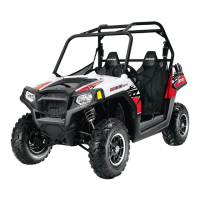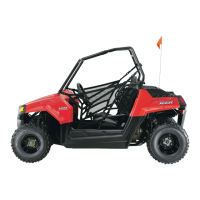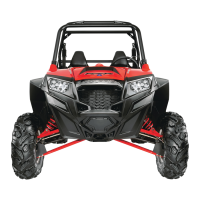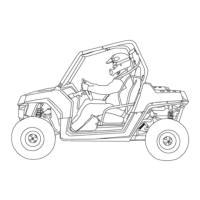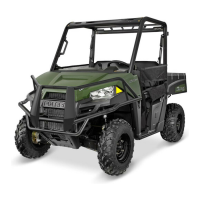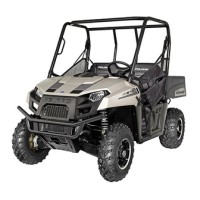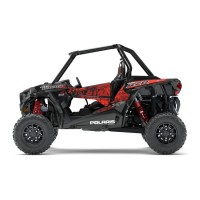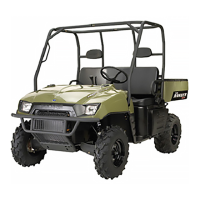2.28
MAINTENANCE
STEERING
Steering Inspection
The steering components should be checked periodically for
loose fasteners, worn tie rod ends, ball joints, and damage. Also
check to make sure all cotter pins are in place. If cotter pins are
removed, they must not be re–used. Always use new cotter pins.
Replace any worn or damaged steering components. Steering
should move freely through the entire range of travel without
binding. Check routing of all cables, hoses, and wiring to be sure
the steering mechanism is not restricted or limited.
NOTE: Whenever steering components are
replaced, check front end alignment.
Steering Wheel Freeplay
Check the steering wheel for specified freeplay and operation.
1. Position the vehicle on level ground.
2. Lightly turn the steering wheel left and right.
3. There should be 0.8”-1.0” (20-25 mm) of freeplay.
4. If there is excessive freeplay or the steering feels rough,
inspect the following components.
• Tie Rod Ends
• Steering Shaft U-Joints
• Steering Gearbox
Tie Rod End / Wheel Hub Inspection
• To check for play in the tie rod end, grasp the steering
tie rod, pull in all directions feeling for movement.
• Replace any worn steering components. Steering should
move freely through entire range of travel without
binding.
• Elevate front end of machine so front wheels are off the
ground. Check for any looseness in front hub/wheel
assembly by grasping the tire firmly at top and bottom
first, and then at front and rear. Try to move the wheel
and hub by pushing inward and pulling outward.
• If abnormal movement is detected, inspect the hub and
wheel assembly to determine the cause (loose wheel
nuts or loose front hub nut).
• Refer to Chapter 7 “Final Drive” for front hub service
procedures.
Due to the critical nature of the procedures
outlined in this chapter, Polaris recommends
steering component repair and adjustment be
performed by an authorized Polaris
MSD certified technician.
Use only genuine Polaris replacement parts.
Tie Rod
U-Joints
Gearbox
Tie Rod
Check for Loose Wheel or Hub

